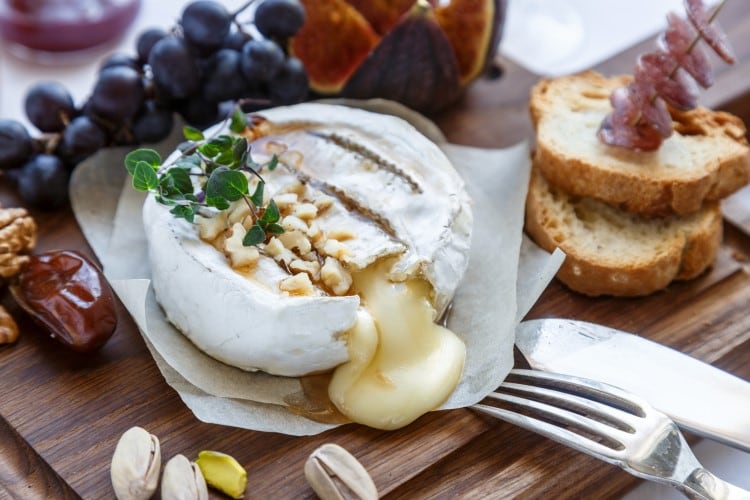The reason for this was an article published by the French National Centre for Scientific Research echoing the concerns of two researchers who had been studying the loss of genetic diversity in fungus species adapted for use by cheesemakers.
This is because over the years, cheese manufacturers had increasingly relied on species that can reproduce asexually. This is ideal for industrial-scale cheese production, but bad for the species’ genetic diversity.
“Fungi can reproduce both sexually and asexually, and for cheesemaking, the asexual reproduction is used,” explained Jeanne Ropars, who alongside colleague Tatiana Giraud has been researching the loss of key genetic traits in fungi used for cheesemaking. “For replicating a strain, you just take a piece of mycelium from a medium and put it on a new medium; it's clonal reproduction.

“The problem with asexual reproduction is that there is no way to prevent accumulation of deleterious mutations in genomes and that there is no genetic diversity. This lack of diversity prevents the species to be able to adapt to changes.”
Fungi selected for cheesemaking are picked for certain preferred traits, such as how well they grow on cheese, the colour and aromas they provide, and the non-production of mycotoxins. For example, a single mutant of Penicillium camemberti that delivers Camembert’s white, soft rind has become the go-to strain for cheesemakers.
But it’s become increasingly difficult to obtain spores of the white strain, which has also lost its ability to reproduce. “We are concerned about the dramatic genetic loss in this species, as P. camemberti is a single white albino mutant,” Ropars said. “There is no way for P. camemberti to cope with the accumulation of deleterious mutations in its genome.”
Still, there’s hope for Camembert’s white rind.
“Penicillium camemberti is not able to reproduce sexually, so there is no way to prevent its fate,” said Ropars. “However, we could imagine the use of the closest relative species from which P. camemberti has been selected from.”
That’s Penicillium biforme, which has already been adapted for cheesemaking and is currently found on natural rind cheeses such as fresh goat cheese and tomme.
“We see huge genetic diversity within this species and we can imagine to use strains from this species to make Camembert and Brie,” Ropars continued. “Bries were not white before the 1950s but more bluish, likely because of this P. biforme mould.”
In the past, orange-hued Camembert was also more common – and this is something that consumers and cheesemakers alike should embrace, Ropars suggested.
“We should move forward a more sustainable system with more local strains used by cheesemakers,” she said. “There is still microbial diversity - I'm only speaking in terms of fungi - in our cheeses. We can see it on cheeses with natural rinds – i.e., where no fungal ferments are added. We should accept a diversity of aspects, color, aromas in our Camembert.”
Hope for blue cheese
Ropars and Giraud also flagged the loss of genetic diversity in Penicillium roqueforti, the species responsible for blue cheese production, but there’s hope on the horizon. A new population of P. roqueforti was found in le bleu de Termignon (Termignon blue), a cheese made at a small scale by only five farmers in the French Alps.
“Our previous work has shown that two populations of P. roqueforti were used for cheesemaking, with one – the non-Roquefort variety used for making blue cheese worldwide - displaying very low genetic diversity,” she explained. “The other one with little genetic diversity is the Roquefort population, and only strains isolated from Roquefort PDO cheeses.”
The discovery is particularly important because of the new population boasts ‘substantial genetic diversity’, as Ropars described it. “What was impressive was the substantial genetic diversity within this new population of P. roqueforti, and the fact that this natural population has adapted to the cheese environment with intermediate phenotypes between cheese and non-cheese populations.
“It is not a new species but a new population. However, actually we don't know much about the fungi present in cheeses, and new species/populations could be discovered in the future, giving hope for preserving diversity in our cheeses.”
She added the population found in Termignon blue is capable of sexual reproduction and can thus be used to bolster P. roqueforti’s genetic diversity.
“We have successfully induced sexual reproduction in the lab in the species P. roqueforti,” Ropars explained. “We were able to cross strains from the non-Roquefort and the Roquefort population, and to obtain viable progenies with new phenotypes. This is a way to create genetic diversity. With this new population with a new genetic background, this enlarges the possibility of creating genetic diversity within cheese strains, as they are already adapted for cheesemaking.”




